The significance of eco-friendly accessories has gained considerable attention. The awareness of ecological and ethical concerns in the fashion area drives it. Sustainable jewelry focuses on minimizing the negative impact on the environment. It ensures fair labor practices throughout the supply chain. This approach includes sourcing materials responsibly. It also includes using recycled metals and supporting fair trade practices. Shoppers are increasingly looking for goods that match their values. Therefore, the demand for jewelry is growing. Individuals must choose sustainable jewelry. They contribute to reducing ecological damage.
People support ethical labor practices. They foster a more transparent and responsible industry. This shift promotes environmental stewardship. It encourages brands to adopt more ethical practices. They make sustainability an integral aspect of modern jewelry investment and consumption. Understanding and supporting sustainable accessories is crucial. It helps to make informed choices. They respect people and the planet. This is while still enjoying the elegance and charm of fine accessories.
What Is Sustainable Jewelry?
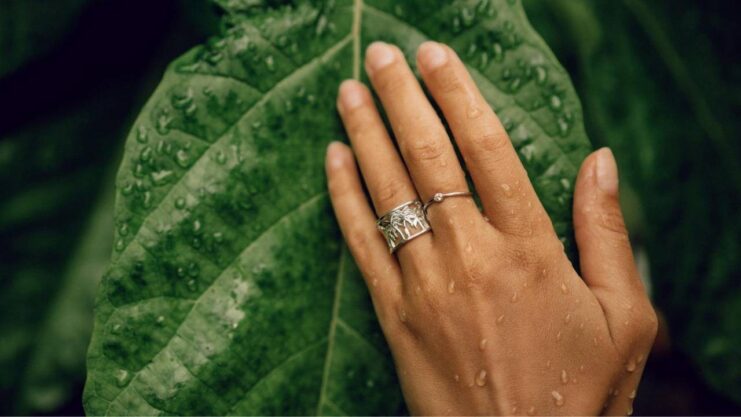
Eco-friendly jewelry refers to pieces created with a commitment. They minimize environmental impact. It promotes social responsibility throughout the entire lifecycle of the product. This involves using materials sourced from eco-friendly practices. They are ethically mined gemstones and recycled metals. It helps to reduce the strain on natural resources and decrease ecological damage. Sustainable jewelry prioritizes eco-conscious production methods. They include:
- reducing waste;
- conserving energy;
- minimizing carbon emissions.
Ethically made jewelry supports fair labor practices. It ensures that all workers are involved in the manufacturing process with dignity and respect. They receive fair wages and work in safe conditions. This approach often requires transparency in the supply chain. It provides consumers with clear information about the origins of materials. Also, this access gives details about the ethical standards adhered to during production.
Sustainable jewelry embodies a holistic approach. It creates beautiful accessories. They align with the values of environmental stewardship and social equity. Consumers should choose sustainable options. They reduce the negative impacts. Such effects are associated with traditional jewelry production. It supports a more responsible and ethical industry.
What Is Ethical Jewelry?
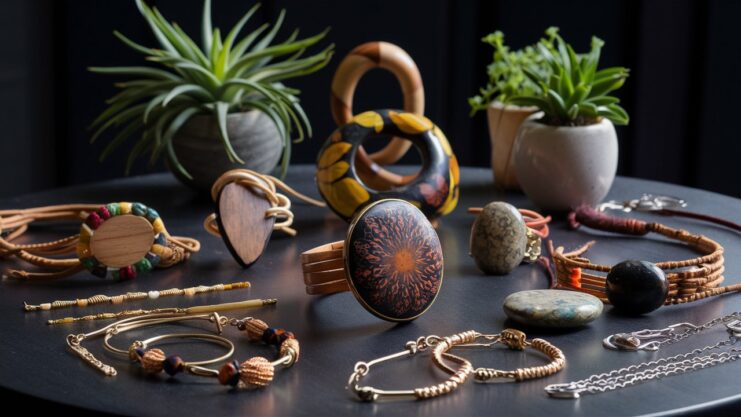
Ethical accessories refer to pieces crafted with a focus on moral fairness. This is throughout the entire production process. This involves using ethically sourced materials. They ensure that gemstones and metals are obtained through fair trade practices. It avoids exploitation and environmental harm. Ethical jewelry emphasizes fair labor practices. They guarantee that workers receive fair wages. Also, staff have their rights respected.
The creation of such adornment also includes transparency in the supply chain. It provides consumers with precise information. This is about the origins and journey of the materials used. It supports local communities. Jewelry creation fosters economic development and social well-being. This often adheres to recognized ethical certifications and standards.
Ethical jewelry aligns with the principles of social responsibility and environmental stewardship. They ensure that each piece is beautiful. It is created with respect for people and the planet. Consumers choose ethical jewelry to contribute to a more sustainable industry.
Examples Of Sustainable Practices
There are samples of eco-friendly trials in various industries. They include:
- Recycling and Upcycling: This practice transforms waste materials into new products.
- Renewable Energy: Using solar, wind, and other renewable sources. They power operations.
- Ethical Sourcing: It procures materials through fair trade and environmentally friendly methods.
- Carbon Offsetting: Compensating for emissions. They invest in environmental projects.
- Water Conservation: This implementing system. They reduce water usage and waste.
- Eco-Friendly Packaging: They utilize recyclable, biodegradable, or minimal materials.
- Sustainable Agriculture: Employing organic farming methods. They avoid harmful pesticides.
- Energy Efficiency: Enhancing buildings and operations. They help to use less energy.
These sustainable jewelry practices help reduce environmental impact. Also, they promote sustainability.
Fair Labor Practices
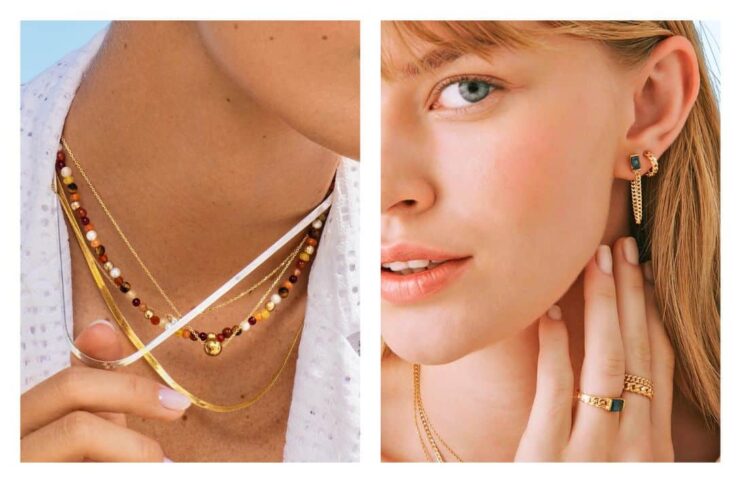
Anti-discrimination practices ensure workers are ethically and respectfully treated. Key practices include:
- Fair Wages: They pay employees income. It meets or exceeds the living wage.
- Safe Working Conditions: They provide a safe and healthy work environment. It has necessary safety measures.
- Reasonable Working Hours: Ensuring workers have a fair work schedule. They are not subjected to excessive overtime.
- No Child Labor: Prohibit its use in any part of the production process.
- Non-Discrimination: Ensures equal treatment. This is regardless of race, gender, age, religion, or other characteristics.
- Right to Unionize: Allowing workers to form and join unions for collective bargaining.
- Regular Breaks: They provide workers with rest periods during work hours.
- Employment Contracts: Offering clear, written ones. They outline terms of employment and workers’ rights.
These practices promote a just and humane working environment.
Eco-Friendly Jewelry: Making A Positive Impact
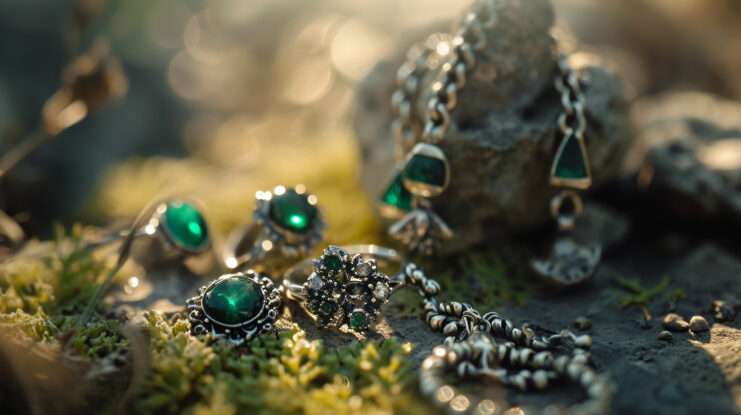
Eco-friendly jewelry focuses on minimizing environmental impact. They also promote sustainability. The leading practices include:
- Recycled Materials: Using them or gemstones to reduce the need for new mining.
- Ethically Sourced Gems: Ensuring gemstones are obtained through fair and environmentally friendly practices.
- Carbon Neutral Jewelry: Offsetting these emissions from production and transportation. They help to achieve a net-zero carbon footprint.
- Eco-Friendly Production: It implements manufacturing processes. They conserve energy and reduce waste.
- Biodegradable Packaging: Packaging materials are recyclable or biodegradable.
- Handcrafted Pieces: Supporting local artisans who use sustainable methods. They have fair labor practices.
- Sustainable Farming: Utilizing pearls and other organic materials from eco-friendly farming operations.
- Water Conservation: Reducing its usage. Recycling water in the production process.
These practices help ensure that eco-friendly jewelry positively impacts the environment and society.
Ethical Gold Jewelry: Standards And Certifications
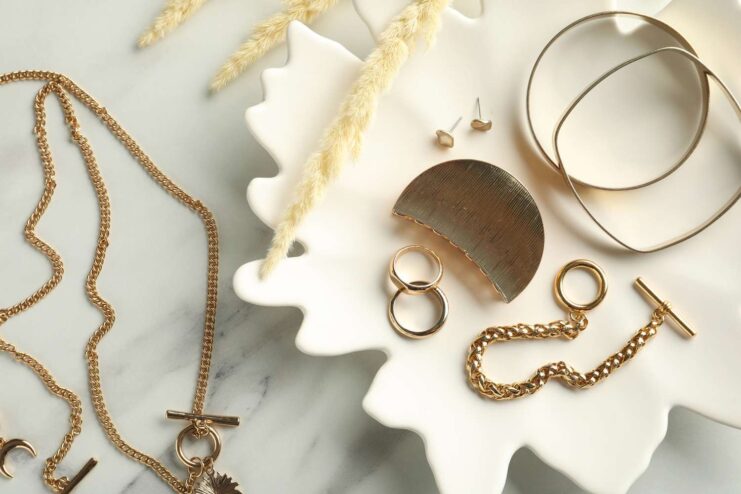
Responsibly sourced gold adornment upholds standards and certifications. They ensure liable sourcing and production. The primary standards and certifications include:
- Fairmined Certification: Ensures gold is sourced from responsible. These are small-scale mining organizations. They adhere to strict environmental and labor practices.
- Fairtrade: Guarantees that ethical gold is sourced from mines. They follow fair labor practices and provide fair wages. Fairtrade supports community development.
- Responsible Jewellery Council (RJC) Certification: Ensures ethical, social, and eco-compliance. They are throughout the jewelry supply chain.
- Conflict-Free Standard: Confirms that gold is not sourced from conflict zones. Also, it is not linked to human rights abuses.
- Green Certification: Ensures ethical gold is mined with minimal eco-impact. This is not made with toxic chemicals. They are cyanide and mercury.
- Recycled: This is reprocessed from old jewelry, electronics, or other sources. It reduces the need for new mining.
- Chain of Custody Certification: Provides traceability of gold from mine to market. It ensures ethical sourcing practices.
These standards ensure that ethical gold jewelry is meticulously produced in a manner. It respects both people and the planet.
Environmentally Friendly Jewelry: How To Choose
Choosing eco-friendly accessories involves considering various eco-conscious practices and certifications. Here’s how to make an informed decision:
- Recycled Materials: You must look for jewelry from reprocessed metals and gemstones. It will help to minimize resource extraction.
- Ethically Sourced Gems: Ensure that they are responsibly mined. Such gems must have minimal environmental impact and fair labor practices.
- Sustainable Earrings: Choose those crafted from eco-friendly materials. Such earrings must be produced using environmentally responsible methods.
- Carbon Neutral Jewelry: Opt for brands that offset their emissions. So, you will achieve a net-zero carbon footprint in production and transportation.
- Eco-Friendly Packaging: Select jewelry that comes in recyclable or biodegradable packaging. It will help to reduce waste.
- Minimalist Design: Consider environmentally friendly jewelry with simple, timeless styles. They require fewer resources and promote longevity.
- Certified Ethical Standards: Look for Fairmined, Fairtrade, and Responsible Jewellery Council (RJC). These certifications ensure ethical sourcing and production.
- Handcrafted Pieces: Support local artisans who use sustainable methods and fair labor practices.
- Water Conservation: Choose brands that install saving techniques in their production processes.
- Transparent Supply Chain: Opt for brands that provide clear information. I must be familiar with their materials’ origins and production processes.
You must consider these factors. So you can choose eco-friendly accessories. It will align with your values and support a more sustainable industry.
How To Recycle Jewelry: Tips And Techniques
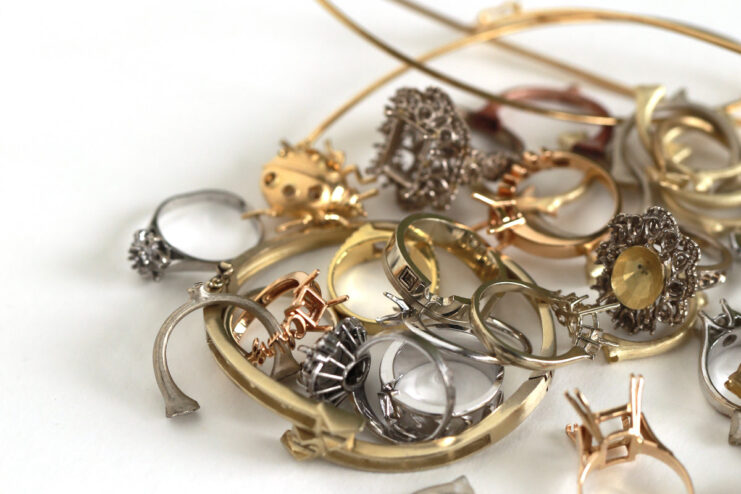
Understanding how to recycle jewelry can help you make environmentally responsible choices. This will give old pieces new life. Here are some tips and techniques:
- Donate: Consider donating unwanted jewelry to charities or organizations. They can repurpose or sell it to fund their missions.
- Repurpose: Transform old adornment into new pieces. Work with a jeweler. Redesign and create unique, custom pieces from existing materials.
- Sell or Trade: Sell your jewelry at consignment shops or online platforms. This gives your pieces a second life. Someone will appreciate them.
- Gemstone Reuse: Remove gems from old settings. Use them in new designs or sell them to jewelers specializing in ethically made jewelry.
- Recycle Metals: Gold, silver, and platinum can be melted down and reused. You must find jewelers or recycling centers. They specialize in metal recovery.
- Jewelry Recycling Programs: Some brands and jewelers offer them. There, they accept old pieces in exchange for discounts or new items.
- Eco-Friendly Crafting: Use parts from broken or outdated jewelry in DIY projects. They will be materials for crafts and art.
How to recycle jewelry? To manage this question, follow these tips. You can reduce waste. You will support a stable and ethical approach to adornment consumption. If you want to find luxury custom jewelry, contact us at RobinWoolard.com












